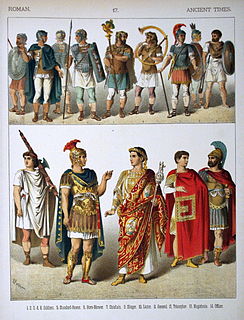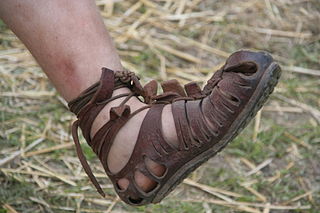 W
WMilitary of the Roman Republic and Empire wore loosely regulated dress and armour. The contemporary concept of uniforms was not part of Roman culture and there were considerable differences in detail. Armour was not standardized and even that produced in state factories varied according to the province of origin. Likewise the Romans had no concept of obsolescence. Provided it remained serviceable, soldiers were free to use armour handed down by family money , buy armour from soldiers who had completed their service or wear discontinued styles of armour if they preferred it to the latest issue. Thus it was common for legions to wear a mix of various styles that could cover a considerable time period.
 W
WA baldric is a belt worn over one shoulder that is typically used to carry a weapon or other implement such as a bugle or drum. The word may also refer to any belt in general, but this usage is poetic or archaic. In modern contexts, military drum majors usually wear a baldric.
 W
WCaligae are heavy-soled hobnailed military sandal-boots worn as standard issue by Roman legionary foot-soldiers and auxiliaries, including cavalry.
 W
WThe focale, also known as a sudarium, was a woolen or linen scarf worn by ancient Roman military personnel. It protected the neck from chafing by the armor. The focale is depicted widely in military scenes from Roman art, such as the relief sculpture on the Arch of Septimius Severus in the Roman Forum and Trajan's Column. It is shown loosely knotted in the front, but is sometimes visible with the ends tucked inside the cuirass.
 W
WLoculus is a Latin word literally meaning little place and was used in a number of senses including to indicate a satchel. Satchels were carried by Roman soldiers as a part of their sarcina or luggage.
 W
WIn Republican and Imperial Rome, the paludamentum was a cloak or cape fastened at one shoulder, worn by military commanders and rather less often by their troops. As supreme commander of the whole Roman army, Roman emperors were often portrayed wearing it in their statues and on their coinage. After the reign of Augustus, the paludamentum was restricted to the Emperor. Children would also wear it sometimes, when there was bad weather and they needed protection.
 W
WThe sarcina was the marching pack carried by Roman legionaries, the heavy infantry of the Roman legions.